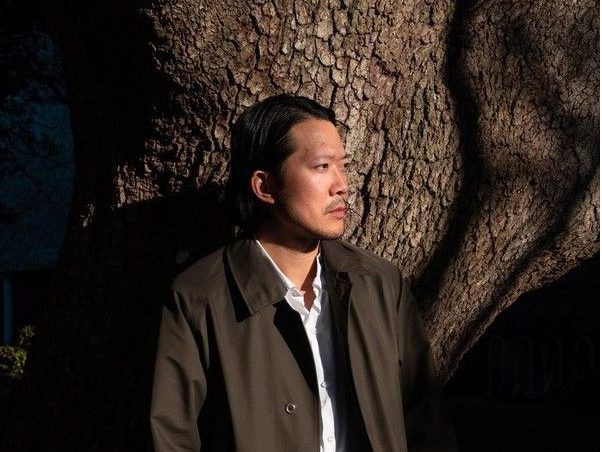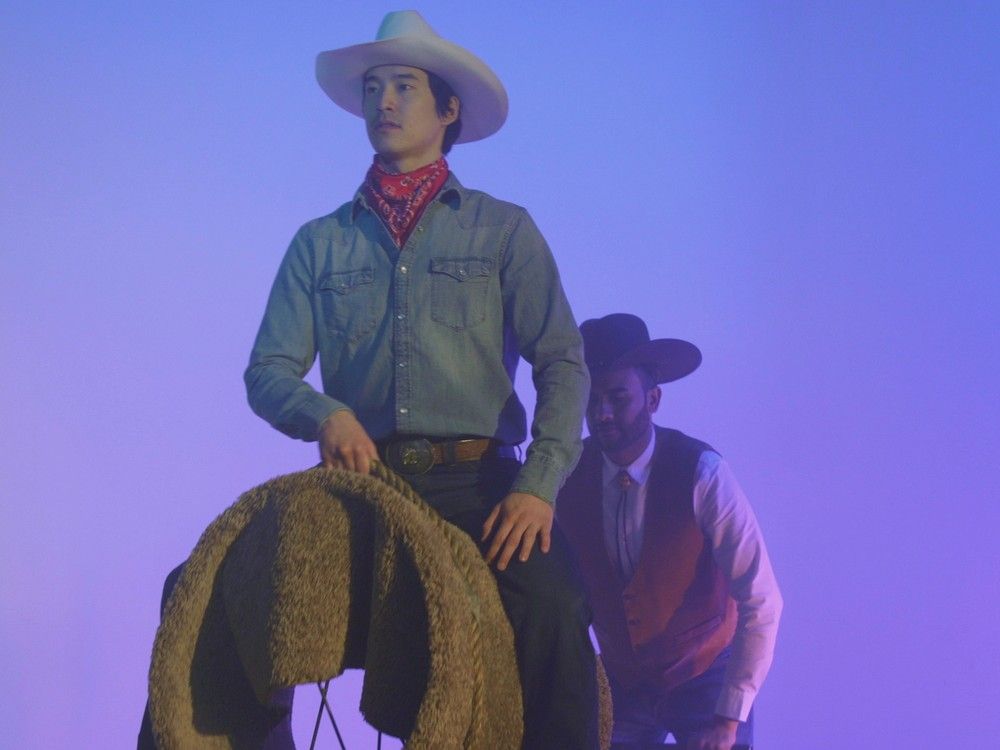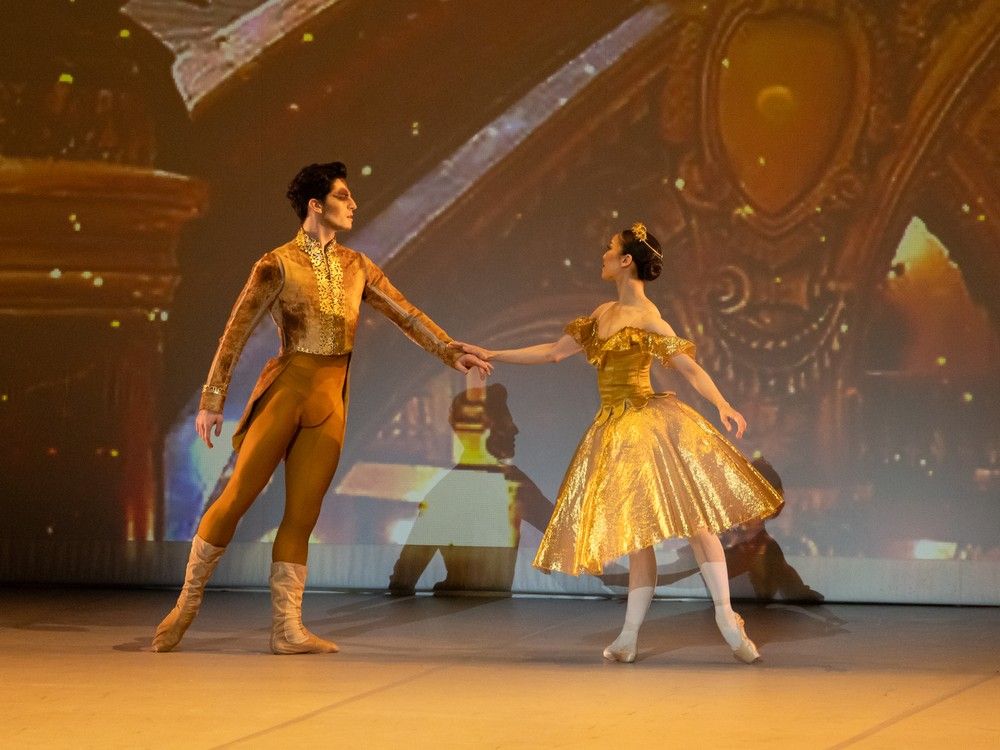Kenneth Tam’s Silent Spikes offers the cowboy on the contemporary Calgary in time

In the American artist Kenneth Tam’s contemporary Calgary exhibition Stille Spikes, Asian-Americans dressed as Cowboys Dance, Mime Rodeo moves and have loose conversations where they compliment each other’s appearance and personality. In the meantime, there is a constant, overlapping story that covers Chinese migrating workers who toil in the Sierra Nevada mountains to build the transcontinental railway, prior to a strike from 1867 that until then became one of the largest employment actions in American history. A storyteller talks about his experiences with the help of voice over while a camera goes deep in the abandoned tunnels in North California.
Although connections can be made between modern implementation and the historical story about the two-channel video installation, the artist says the thread that links all these ideas to each other migrating work, Westwart expansion, masculinity, the cowboyarchetype, discrimination is not necessarily meant to be clear immediately.
“I think the thread I am,” says Tam, in an interview from his house in Houston. “I bring all these different interests together. I try to make these connections where they may not have existed before. For me it was about over time. Thinking of the present in terms of my artists and their background in the way they think about themselves and the cowboy images and then the use of the history of the migrants and the structure of the Railway to do these to be a way to do these to be a way to do these to be a way to do these to be a way to do these to be a way to do these to be a way to do these to be a way to do these to be a way to do these to be a way to how to do these to be a way to the way to do these to be a way to the way to do these to do this to the way to do this and to do these to do this to the way to do the railway way and to do these in which they are to work and to do these to do the railway way to do the railway road. historische momenten zijn om te werken en hoe deze historische momenten zijn om te werken en hoe deze historische momenten zijn om te werken en hoe deze historische momenten zijn om te werken en hoe deze historische momenten zijn om te werken en hoe deze historische momenten zijn om te werken en hoe deze historische momenten zijn om te werken en hoe deze historische momenten zijn om te werken, Ze dachten over zichzelf als een groep en hun relatie met elkaar, na te denken over de potentiële Intimities that may have been done within these workers’ groups ”

The modern part of the exhibition gives screen time to Asian-American men who has recruited TAM, all of whom are new in the performance and rarely or never get the chance to play the role of the cowboy. It combines performance art and quasi-documentary filmmaking while the newbie actors dancing awkwardly, pretending to ride Lasso and Broncos and talk to each other. The historic part, although based on real events, is actually largely an imagination, because the Chinese migrants left very little behind the documentation of their experiences.
“There were no written reports of their lives that worked on the railway,” says Tam, who grew up in Queens, NY, and currently teaches
At Rice University
In Houston, Texas. “So I had to place a semi-fictional voice to tackle some of these missing experiences, these gaps in the historical memory. The video also tries to speak with that absence. To bind the past and the present, the tunnel becomes a space that can move between these two periods.”
It was no coincidence that Contemporary Calgary chose to open the exhibition to coincide with the 10-day run of the largest outdoor show on earth. Whether the Calgary Stamede Feestgoers inspires to entertain deep thoughts about cowboys and masculinity is unclear, but the images should definitely touch at home. Tam himself only arrived in Calgary to officially open the exhibition until after the Stampede and did not have much knowledge about it. The multidisciplinary artist has described the plight of Chinese migrating workers in other projects. Tender is the hand that the Stone of Memory holds, was an exhibition from 2023 of sculptures and video installation based on the plight situation of thousands of Chinese workers who built the Southern Pacific Railroad via the Seminole Canyon in Texas in 2021 commissioned by order of Quens Spikes.
Tam said he doesn’t know much about the similar history of Chinese migrating employees in Alberta, but it is something that has also been investigated locally through museum and art exhibitions. Both Canada and the US have drawn up discriminatory Chinese exclusion laws in the late 19th and early 20th century to limit Chinese immigration. In both countries, the stories of the Chinese workers who have built the railway are largely without papers.
Silent Spikes not only tackle this absence in the historical record, but also the lack of pop culture display of Asian-Americans in the Western story and the genre.
“A question for myself was” who can portray this character from the cowboy, specifically through the Western film, “says Tam.” It is quite specific about who can embody this character. Although it has evolved, it is still a pretty white idea of who this character is. ”
Yet Tam says that the exhibition is intended to be laminated and that the different ideas – the cowboy story and the archetype, the history of migrating employees – “not necessarily solve neatly.”
“My goal through this project and really through all my work is that people with more questions leave out than answer,” he says. “There is no natural way in which these things are meant to answer each other. There are supposed to be tensions or moments where things do not fit neatly.”
Kenneth Tam: Silent Spikes run until November 16 in today’s Calgary.



